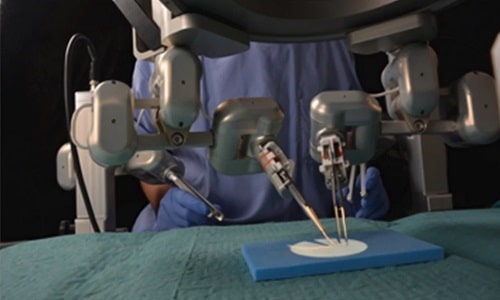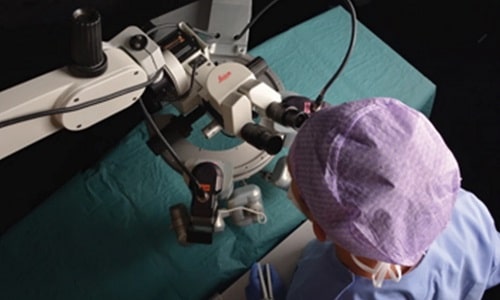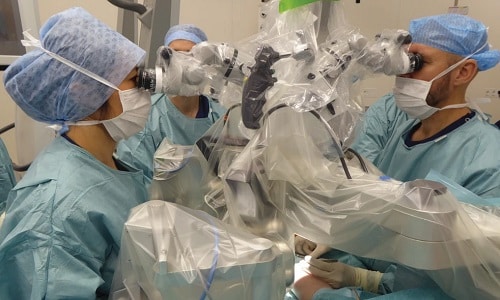Advancements in reconstructive microsurgery have evolved into super microsurgery for performing minute tissue transplantation. While a surgeon can find it extremely challenging to operate with great precision, a robot’s assistance can help overcome such human limitations.

As a consequence of evolving microscopes and instruments, surgeons can now perform super microsurgeries on a minute scale. With the assistance of MUSA, the world’s first robotic platform for super microsurgery, surgeons will not have to worry about the accompanying vibrations while performing microsurgery with hands.
Developed by engineers from Maastricht University in collaboration with the Eindhoven University of Technology, the robot is easily manoeuvrable, equipped with arms for holding tiny surgical instruments that can be easily placed into the holders. Pre-clinical tests of the MUSA have confirmed the safety and feasibility in performing highly complex microsurgeries.
Resolve challenging situations
Medical condition such as cancer is a life-threatening illness. However, owing to advances in early diagnosis and more effective treatments, the situation has slightly improved than before. While this comes as a piece of encouraging news, special attention is also required to effectively operate upon the root cause through surgical methods.
And this is where high precision and dexterity of robot-assisted surgery is essential for a successful outcome.
The MUSA is a lightweight, small-sized robotic system, which has an integrated microscope and can be mounted on a surgical table. Key features of the MUSA are its ability to scale motion and filter manual tremors (trembling of hands) to enhance microsurgical performance. Moreover, the robot is compatible with standard surgical microscopes and microsurgical instruments.
Electro-mechanical mechanism
In general, the system is composed of:
- Master manipulators manipulated by the surgeon using forceps-like joysticks, mounted on the operating table.
- A suspension ring that is placed between the operating field and the surgical microscope. The suspension ring is attached to the operating table and can carry multiple robotic slave arms.
- Slave manipulators, which are robotic arms that can be equipped with genuine microsurgical instruments.
- Foot pedals that can activate the system and control motion scaling.

Using the master manipulators, one or two operating surgeons can control the activated robotic slave arms. Through the digital interface, tremor filtration and motion scaling provide enhanced precision to the surgeons’ motion.

With this setup, the surgeons can remain seated close to the patient and have a direct view of the patient’s part that is being operated upon. This coordination between conventional manual approach and robotic assistance enables such hybrid operations to be efficiently used in phases of the procedure where high precision is needed.
Previous model
The Da Vinci system (Intuitive Surgical, Inc.™, Sunnyvale, US) was the first robotic device designed for minute invasive surgeries. The system offered a three-dimensional stereoscopic vision, instruments with six degrees of motion freedom, scalable movements, and elimination of tremor. Despite the aforementioned robotic features, it was observed that the robot had drawbacks when used in microsurgical procedures. For reconstructive microsurgery, instruments of small size are mandatory. However, the surgical instruments of the Da Vinci were large. In addition, limited visual magnification coupled with a poor resolution made (super) microsurgical procedures difficult.
High success rate
Recent studies have shown that it is feasible to complete super microsurgeries using the MUSA. Total time of the surgical procedure for a combined manual and robot-assisted microsurgery remains within 115 minutes, as compared to 131 minutes using the Da Vinci robotic system. This highlights MUSA’s already good performance.
In conclusion, robot assistance may potentially overcome the human limitations in challenging super microsurgical procedures as demonstrated by the MUSA. This promises high feasibility and safety in overcoming critical medical conditions, thus saving more lives.






